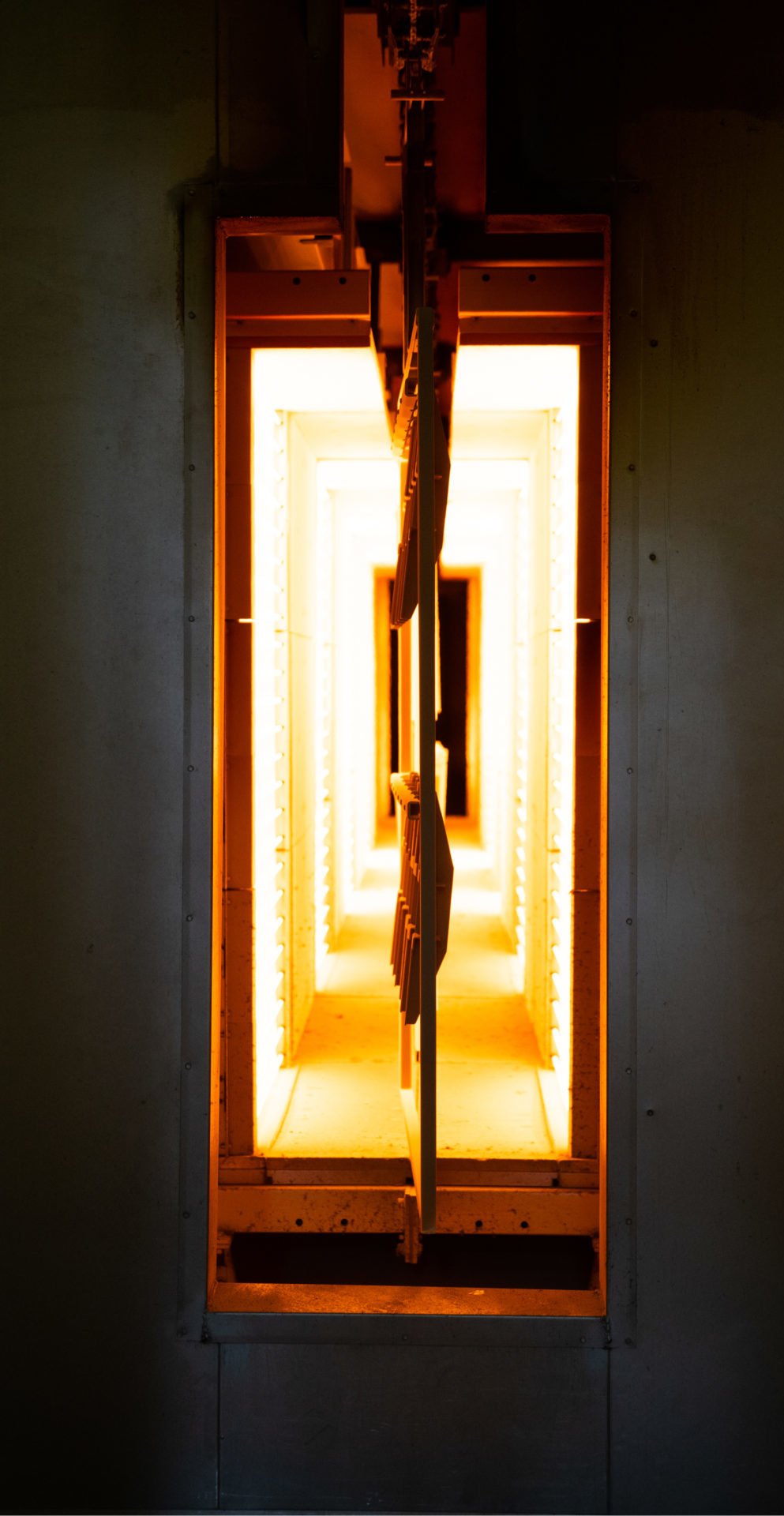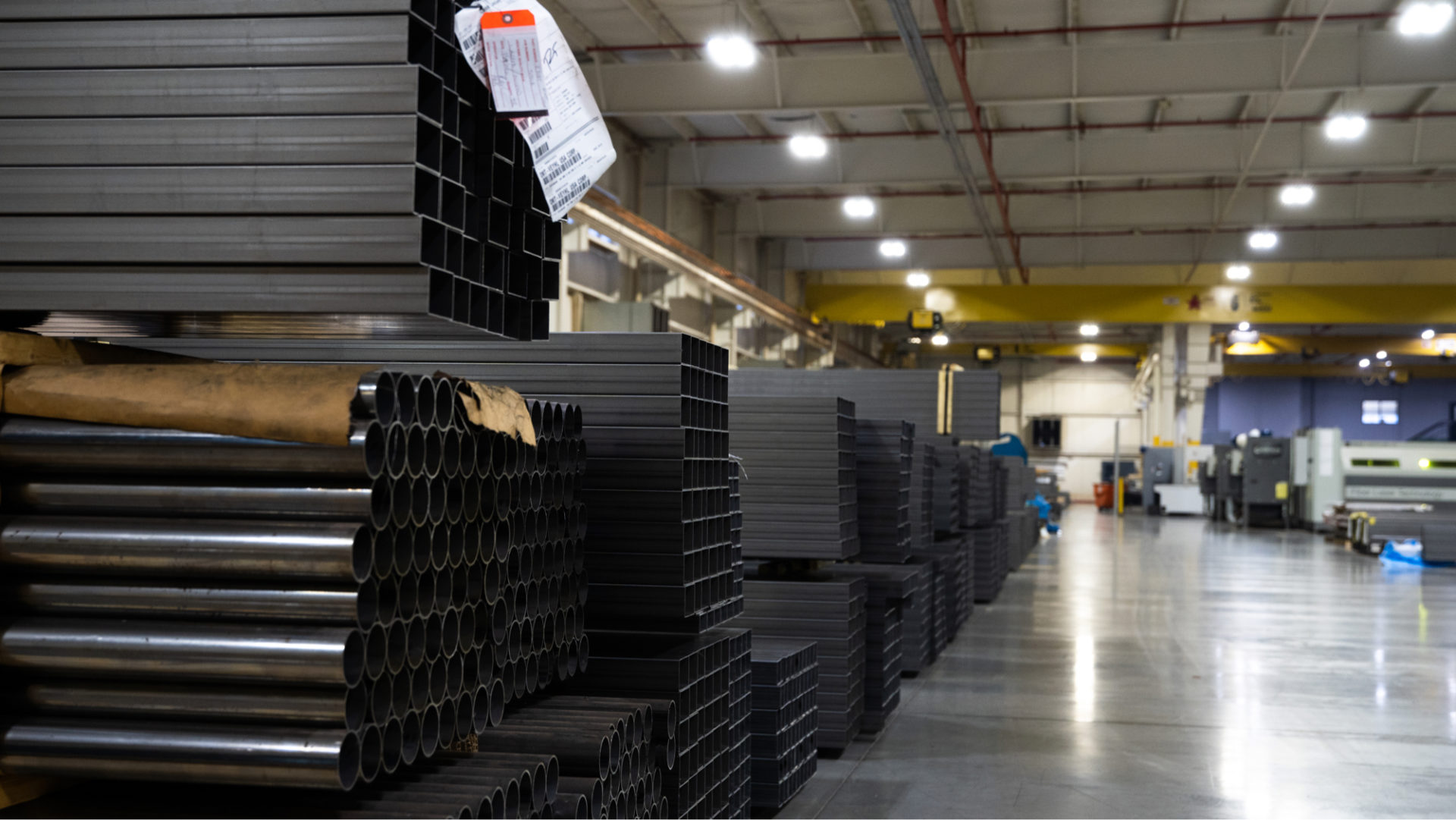PRODUCT SUPPORT
Have questions regarding product assembly, installation or operation?
Please check to see if your question is answered on this page.
If you still have inquiries, we would be happy to assist you!
Please contact Customer Service.
Quality Hotline
Available Monday through Friday from 8:00am – 5:00pm EST
616-795-4516
If applicable, please provide the
AO# found on the white label of
your product’s control box.
Table Installation & Function
Q What tools do I need to assemble a table?
A Please refer to each table’s User Guide.
Q Why does the table only move down?
A Because the system has not been initialized (reset).
This procedure is used to align the position of the height adjustable legs after installation, loss of power and realignment of the legs.
Perform the following procedure:
1. Press “down” button on handswitch until tabletop stops at the lowest position limit
2. Release the “down” button
3. Press the “down” button again until the table top moves down slightly, then up slightly
4. Release the “down” button; procedure is complete
Height adjustable legs must be initialized (reset) together to allow the control box to monitor the movement of the legs to prevent damage from overextension
Q What can be done to correct an uneven table top?
A
1. Perform the Initialization (reset) procedure. If issue isn’t corrected, perform the following steps.
– Disconnect power cord from outlet or control box
– Disconnect leg motor cords from control box
– Connect tallest (most extended) leg to first port (M1) on control box
– Connect remaining leg(s) to open leg motor port on control box
– Connect power cord from control box to outlet
– Perform initialization (reset) procedure. This time press “down” button on handswitch for up to 30 seconds while leg receives signal from control box
2. Adjust the foot glides.
3. Adjust the caster stem.
4. Replace a broken leg.
Q My table no longer moves up and down. What happened?
A
1. Check all connection points to control box.
2. Check the main power cord connection to outlet.
3. Listen for motor sound.
– If no motor sound is detected, an electrical issue may have occurred.
– If the leg motors sound like they are moving when pressing the “up” or “down” button, but the legs do not move, the leg motor or the leg mechanism may be damaged.
– Contact customer service
Q I replaced a leg, now the legs are at different heights. What do I do?
A Initialize the system.
Perform the following procedure:
1. Press “down” button on handswitch until tabletop stops at the lowest position limit
2. Release the “down” button
3. Press the “down” button again until the table top moves down slightly, then up slightly
4. Release the “down” button; procedure is complete
Height adjustable legs must be initialized (reset) together to allow the control box to monitor the movement of the legs to prevent damage from overextension
Q Why does one table leg make a loud buzzing sound? (i.e. vibration noise)
A Unintentional handling issues (such as a dropped leg) may damage the leg motor gear interaction. Please contact customer service for product replacement.
Q What causes the table to stop moving and back up slightly?
A Intelligent System Protection (ISP). ISP is a collision protection system aimed at reducing the risk of system damage when a collision is detected. After ISP is activated, height adjustable legs will immediately move the opposite direction.
– ISP sensitivity and shutdown values depend on the complete system, which includes both mechanical and electronic components
– ISP values can be adjusted prior to taking ownership of the product. Please contact customer service for more information.
Q Is wire management important for adjustable height leg functionality?
A YES. Ensure all power cords are free to move up and down with the tabletop. Do not allow power cords to be pinched, wedged, stretched or rub against other objects around and under the tabletop.
Control Box & Programming
Q Are control boxes interchangeable with different leg styles?
A Control boxes are not interchangeable. Control boxes are programmed with parameter files for specific height adjustable legs. Unauthorized use of a control box may result in catastrophic damage to the height adjustable legs.
Q How can I tell if the control box is not programmed?
A
1. Control boxes make a series of clicking sounds (click codes) when connected to an electrical outlet.
– One click means no parameter file; control box is inoperable
A programmable handswitch will display a series of dashed lines when connected to an unprogrammed control box.
The handswitch may also display a series of 2’s to indicate a circuit board failure due to an electrical surge.
Q The control box makes clicking sounds when connected to a power source. What do they mean?
A
1 click means the system is in emergency operations mode; it will not function
2 clicks is a normal start up; system is working normally
3 clicks is a power fail error (communication lost)
4 clicks is a system reset
5 clicks is a normal task life reset
6 clicks is a restart due to an unknown root cause
Contact customer service if your system does not function
Q The programmable handswitch displays a zero or a series of zeros. What does this mean?
A When a handswitch displays zero(s), it usually means the table assembly was connected to an electrical outlet for the first time. The zero(s) will be displayed on the handswitch for a short period of time before giving way to displaying E61.
Carry out the initialization (reset) procedure when the handswitch displays these codes.
See Troubleshooting Guide for more info.
Q The programmable handswitch displays error code E12, E13 or E14. What does this mean?
A Interrupted signal in the circuit board linked to motor cord port M1, M2 or M3. A problem with the motor cord or motor cord connection was detected (short circuit).
See Troubleshooting Guide for more info.
Q The programmable handswitch displays error code E24, E25 or E26. What does this mean?
A Over current condition linked to motor cord port M1, M2 or M3.
– Remove obstacles around or underneath the tabletop that block its range of movement.
– Remove excess load on table.
See Troubleshooting Guide for more info.
Q The programmable handswitch displays error code E36, E37 or E38. What does this mean?
A Control boxes contain plug detection.
This means that the control box recognizes when a motor cord is connected to plug port M1, M2 and M3, and when a leg motor has been removed or replaced.
If a motor has been removed from a plug port, the control box will click three times.
If a programmable handswitch is used, the error code E36 (M1), E37 (M2) or E38 (M3) will be shown, depending on which leg motor was removed.
See Troubleshooting Guide for more info.
Q The programmable handswitch displays error code E93. What does this mean?
A This error code represents a connection error in the cascading network.
The error usually appears on the handswitch display for 15 seconds, then the control box goes into reset mode displaying zero(s) on the handswitch.
– Check all cord connections to the control box and perform the initialization (reset) procedure.
See Troubleshooting Guide for more info.
Q What is a factory reset and how is it performed?
A A factory reset returns the control box to its startup operational mode.
Basic Up/Down handswitch:
– Disconnect the control box from its power source
– While disconnected, press and hold the “up” and “down” buttons on the handswitch
– Reconnect the control box to its power source, continue pressing the “up” and “down” buttons on the handswitch until the control box clicks twice
The control box has now been reset to the factory settings.
Programmable handswitch:
Each step must be completed within 5 second intervals, or the factory reset will terminate and will have to start over.
– Press and hold the 1, 2, and “up” buttons simultaneously (for up to 10 seconds) until the display shows “S” and a number (ex: “S 5”)
– Press the “down” button on the handswitch until the display reads “S 0”
– Press the “S” button
The control box has now been reset to the factory settings.
Q What is the difference between a Container Stop and a Shelf Stop?
A These features can limit the movement area of a tabletop (container stop is below the table and shelf stop is above it).
– A Container Stop Position is saved in the lower half of a tabletop’s movement area. When set, the position will the the new lower limit position
– A Shelf Stop Position is saved in the upper half of a tabletop’s movement area. When set, the position will be the new upper limit position.
Q How are Container Stops and Shelf Stops programmed and unprogrammed while using a simple Up/Down handswitch?
A
To program Container Stop and/or Shelf Stop Positions:
1. Move the desktop down or up to the desired position where a Container Stop or Shelf Stop is to be stored.
2. Press and hold the “up” and “down” buttons on the handswitch simultaneously until the control box clicks twice.
3. Release the handswitch
To deactivate Container Stop and/or Shelf Stop Positions:
1. Move the tabletop to any position in the lower half or upper half of the tabletop movement area to deactivate a Container Stop or Shelf Stop
2. Press and hold the “up” and “down” buttons on the handswitch until the control box clicks once
3. Release the handswitch
Q How are Container Stops and Shelf Stops programmed and unprogrammed while using a programmable handswitch?
A
To program Container Stop and/or Shelf Stop Positions:
1. Move the desktop down or up to the desired position where a Container Stop or Shelf Stop is to be stored.
2. Press and hold the “S” button until the control box clicks twice.
3. Release the handswitch
To deactivate Container Stop and/or Shelf Stop Positions:
1. Move the tabletop to any position in the lower half or upper half of the tabletop movement area to deactivate a Container Stop or Shelf Stop
2. Press and hold the “S” button on the handswitch until the control box clicks once
3. Release the handswitch

